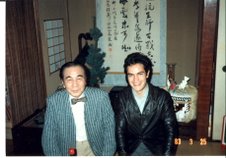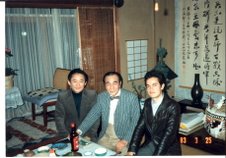Arreglos bolivianos
[English version below the picture on this page]
Mientras esperamos con curiosidad e impaciencia la documentación que nos prepara Bolivia Clásica, aquí pongo las versiones computarizadas de Arreglos bolivianos.
Este tipo de documento de audio tiene sus funciones específicas, que se pueden resumir en pocas palabras: sirven como sustituto a falta de de una grabación verdadera. Pero, demás está decirlo, no son una grabación verdadera, sino un remedo de lo que harían los ejecutantes humanos.
Los programas de computadora que proveen estos "demos" son cada vez más sofisticados, y si uno tuviera tiempo podría trabajar más en ellos para hacerlos más verosímiles. Pero la vida es corta, y uno escribe para músicos reales. Me parece apropiado que los demos suenen como lo que son: un sustituto provisional, parcialmente útil hasta que estén disponibles las grabaciones hechas por los músicos.
Ventajas: los tempos, los ritmos y las duraciones de las notas son exactos, tal como están escritos; la afinación es correcta; las dinámicas son consistentes.
Desventajas: no hay expresión; no hay flexibilidad, no hay carácter; no hay variedad de tono; la afinación es inflexiblemente diatónica; algunos efectos de articulación son imperfectos (como la ligadura sobre punto de separación en Viva Cochabamba o los staccati del violín en Pensando en ti); los sonidos se aproximan bien a los instrumentos que representan, pero a fin de cuentas no son los sonidos reales, sino que suenan sintéticos.
Las notas de programa están en la sección correspondiente de esta bitácora; pulsar Programe notes / notas de programa en el panel de la derecha, o pulsar aquí.
While we await with curiosity and impatience the documentation Bolivia Clásica are preparing, I am placing here computerised versions of Arreglos bolivianos.
This kind of audio file has specific functions, which one can sum up in very few words: they are useful as a substitute where there are no real recordings. But, it goes without saying, they are not real recordings, but a mimicry of what human performers would do.
The software that produces these 'demos' is ever more sophisticated, and, if one had the time, one could do more work to improve their verisimilitude. But life is short, and one writes for real musicians. I think it appropriate that computer demos should sound like what they are: a provisional substitute, partially useful until such time as the recordings made by the musicians are available.
Advantages: the tempi, the rhythms and the note durations are accurate, as notated; intonation is correct; dynamics are consistent.
Disadvantages: no expression; no flexibility; no character; no variety of tone; intonation is rigidly diatonic; some articulation effects come out imperfectly (such as the slur over a staccato dot in Viva Cochabamba or the violin's staccati in Pensando en ti); the sounds are close enough to the instruments they represent, but ultimately they are not real and sound synthetic.
Programme notes (only in Spanish for the moment) are in the relevant section of this blog; click Programme notes / notas de programa in the panel on the right, or click here.


